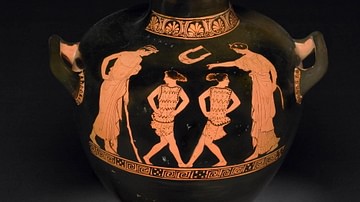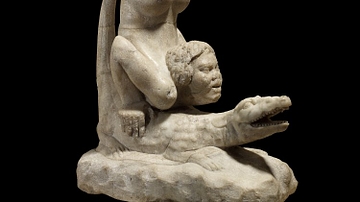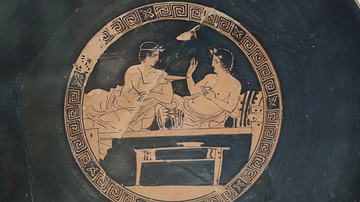Illustration
A red-figure hydria (water-jar) made and found in Campania, Italy, from c. 325-350 BCE, attributed to The Foundling Painter.
A dancing girl (orchestris) stands on her hands in an acrobatic act, which can be a somersault or a walk on hands. She is between a stool and a potter’s turntable, both of which could be used for performing amazing acrobatic acts. The hand-drums (tympana) and the decorative band of beads suggest that her performance takes place in a party. In ancient Greece, troupes of entertainers could be hired to entertain the guests at a symposium (drinking-party).
Cite This Work
APA Style
Museum, T. T. o. T. B. (2020, October 15). Acrobat-dancer on a Hydria. World History Encyclopedia. Retrieved from https://www.worldhistory.org/image/12884/acrobat-dancer-on-a-hydria/
Chicago Style
Museum, The Trustees of The British. "Acrobat-dancer on a Hydria." World History Encyclopedia. Last modified October 15, 2020. https://www.worldhistory.org/image/12884/acrobat-dancer-on-a-hydria/.
MLA Style
Museum, The Trustees of The British. "Acrobat-dancer on a Hydria." World History Encyclopedia. World History Encyclopedia, 15 Oct 2020. Web. 16 Apr 2025.






